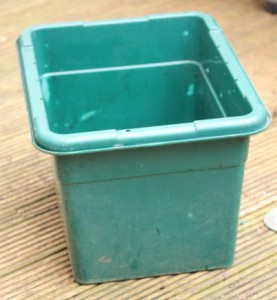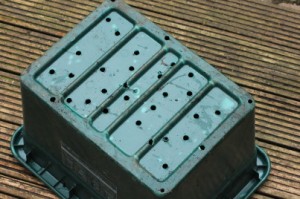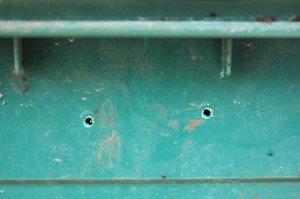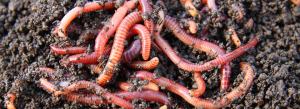11 Feb What’s wiggly and pink and birds like to eat: Part 1 of 2
Worms!
How to make your own wormery
A wormery will recycle your waste food to make a superb fertiliser for your crops and a living soil in your containers. Wormeries are perfect for small spaces: they’re small, don”t smell and make compost faster than conventional composters. You can either buy one (in the UK many councils offer them at discounted prices) or it can be fun and rewarding to make your own.
It’s easy to make your own!
When I started growing I imagined that wormeries were complicated and hard to make. The truth is that they are simple and easy.
Worms will be happy in any home that meets their basic needs: air, darkness, and moisture. It also shouldn’t get too hot or cold. There are several ways to make a wormery. The easiest is to use an old plastic (or wood) box. Here’s how to do it (I’ll share other ways in the future).
What you need
To make a simple box wormery you’ll need a shady space (under a bench or table is fine) for it to live and:
- A large plastic box with a lid (see below)
- A drill
- 2 bricks or pieces of wood to stand it on.
- Some newspaper or cardboard.
- Worms and worm bedding
How to make it
 1. Find a large plastic box, with a lid (you can improvise a lid if it doesn’t have one). If you can find a box that is UV treated it will last longer outside (most plastics designed for outside use eg recycling boxes will be OK). There is not really a minimum size – but the larger the surface area of your box, the more food waste you’ll be able to feed it. Anything much smaller than 14 inches (35cm) in diameter will be quite limited. An old recycling box like this is perfect. These normally come with a lid but it’s been lost so I will have to improvise. This one is a good size – 50cm x 35cm – but a bit smaller would also be OK.
1. Find a large plastic box, with a lid (you can improvise a lid if it doesn’t have one). If you can find a box that is UV treated it will last longer outside (most plastics designed for outside use eg recycling boxes will be OK). There is not really a minimum size – but the larger the surface area of your box, the more food waste you’ll be able to feed it. Anything much smaller than 14 inches (35cm) in diameter will be quite limited. An old recycling box like this is perfect. These normally come with a lid but it’s been lost so I will have to improvise. This one is a good size – 50cm x 35cm – but a bit smaller would also be OK.
 2. Drill holes in the base of the box. Worms need air to breathe (just like us) – so drill enough holes to ensure a good air flow. I used a 1/2 inch (12mm) drill piece here – but any reasonable sized holes will do. (Just bear in mind that smaller holes are more likely to get blocked). You want as much air as possible to get in. So the more holes you can drill – while keeping the integrity of the box intact – the better.
2. Drill holes in the base of the box. Worms need air to breathe (just like us) – so drill enough holes to ensure a good air flow. I used a 1/2 inch (12mm) drill piece here – but any reasonable sized holes will do. (Just bear in mind that smaller holes are more likely to get blocked). You want as much air as possible to get in. So the more holes you can drill – while keeping the integrity of the box intact – the better.
3. Put the box on bricks (or anything else that will do as ‘feet’) to ensure air can flow up in through the holes.
4. Cover the bottom with a sheet of newspaper. This will help ensure the worms don’t fall out! You don’t need to build Fort Knox – the worms will only try to escape if they’re unhappy – for example if it gets too acid inside (this can happen if too much onion or citrus is added).
A layer of newspaper over the holes will prevent the worms falling out when you first put them in. You can put a drainage layer under this if you like – using eg stones or twigs – but this is not essential. It will improve the aeration, but it also has to be seperated from the worm compost when you harvest it which can be a bit of a hassle.
5. Drill small air holes in the lid and the side at the top. If you’ve got a sheltered place to put your wormery, you can drill plenty of holes in the lid to let air in. But if your wormery will be exposed to the rain, just drill a few – otherwise the box will get water logged in wet weather. You can add more holes to the top sides of the box instead. However you do it, the worms need a good supply of air – without letting in excessive amounts of light (worms need darkness).
 Drill a line of small air holes in the top sides of the box. You can also put holes in the lid – but not too many if the box will be exposed to the rain a lot.
Drill a line of small air holes in the top sides of the box. You can also put holes in the lid – but not too many if the box will be exposed to the rain a lot.



